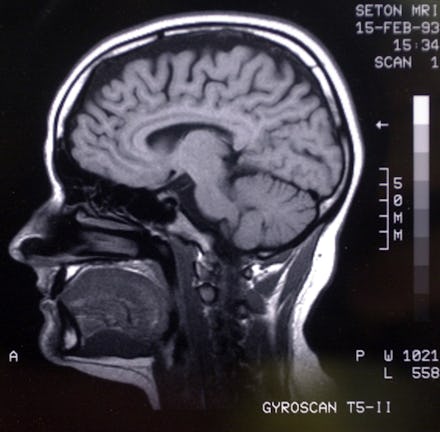Science Has Discovered There Are Actually Two Kinds of Extroverts — Which One Are You?

You probably know the differences between introverts and extroverts, but did you know it doesn't stop there? According to a study published in Cognitive, Affective, & Behavioral Neuroscience, there's good reason to believe there are two different types of extroverts, each with their own personality types that can be traced back to differences in their cerebral make-ups.
"Many studies have found that there are two domains of extraversion based on self reports," Tara White, study co-author and professor at Brown University, told Mic.
First there's the "go-getter," who's more assertive, persistent and achievement-driven, the kind of person always raising their hand in class. This is called "agentic extraversion." Then there's the "people person," who is friendly, emotionally warm and great with ice breakers, known as "affiliative extraversion."
Separating the go-getter from the people person. "I felt that those differences must also be present, to some extent, in the brain," White said. To test this theory, she and her co-author Erica Grodin from the National Institutes of Health examined a number of brain scans and found that these two types of extroverts do, in fact, have different brains.
White and Grodin examined 83 brain scans from people with a range of personality traits, not all of whom were extroverted. The team then compared the scans of those on the self-reported agentic side with those on the self-reported affiliative side and found a discernible difference.
It's all a gray matter. In the scans, the researchers noticed a difference in regional concentrations of gray matter, the brain's outer layer made up of neurons that help process sensory information and deliver nutrients to help the brain fire signals.
So to speak, the more gray matter you have in a given region of your brain, the better that region will work to keep your senses sharp.
People who scored higher on the agentic extraversion measure had greater gray matter in specific regions of the brain as well as the medial orbitofrontal cortex (a small region that sits between the eyes), Grodin explained. People who scored higher on affiliative extraversion also showed increased gray matter in the medial orbitofrontal cortex but not in any other regions.
The team found exactly what they had hoped for: a distinct anatomical difference in the brains of the agentics and the affiliates. Based on past research, it makes a lot of sense.
A 2012 study found introverts have more gray matter in their prefrontal cortex, the region of the brain that helps control thinking and decision making. Another paper found extroverts have more active dopamine receptors and are more sensitive to the social rewards. In a similar way, agentic extroverts may have more gray matter in regions of the brain that are stimulated by rewards than their affiliate counterparts.
Pictures don't lie. "This is the first study looking at these two types of extraversion in healthy brains," Grodin told Mic. She said previous work looked at differences in extroverts but only among much older folks.
The researchers still don't know the answer to whether personality traits are assigned at birth, if certain factors spur the brain to develop this way or if it's a combination of both.
"The most important thing to note is that there is no way to determine causality from our study," Grodin said. "We just looked at a picture in time and found relationships between extraversion measures and brain volume."
Knowing how changes in our head translate into how we act or feel is a step toward understanding what makes humans tick. Either way, this study proves that while many of us are extroverts, that doesn't mean we're all the same.